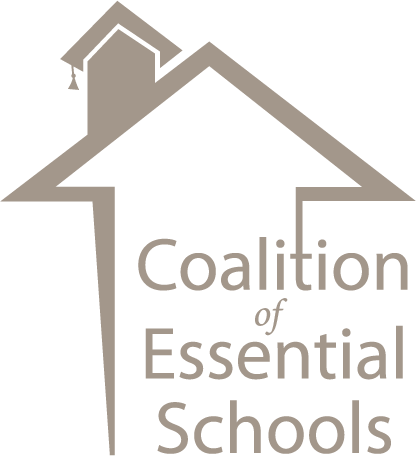At the Prospect Center for Education and Research in Bennington, Vermont, Patricia Carini developed one of the earliest and most influential processes for reflecting on students and their work. As the Center began to archive examples of student work from the Prospect School, an independent school founded in 1965, Carini and her staff recognized the potential for teacher learning through close collaborative looks at such work. The ensuing “Descriptive Review of a Child” comprised a series of rounds of description in which the observations of a number of participants accrue around a few focused questions.
The process aims, writes Rhoda Kanevsky in her essay condensed below, to “make the child visible” as a “unique person who is trying to make sense of the world.” Guided by a facilitator, the presenting teacher describes the child; then questions and comments from other participants evoke new information and insights. The intent, she says, is not to change the child but to help the teacher see the child in a new light, and “use the child’s interests and values to create harmony in the child’s school life.” The protocol is summarized as follows:
1. The chairperson convenes the session. The teacher-presenter gives the child’s basic statistics: a pseudonym for the sake of privacy, as well as such facts as grade, age, and birth order. The chairperson describes the teacher-presenter’s “focusing question” (e.g., “How can I help Jason work more productively with other children in the classroom?”).
2. The presenting teacher may describe the classroom context if it would be helpful to participants: the room plan, setting, schedule, etc. Then she describes the child, including both characteristic and unusual behavior, using the prompts in the following categories:
Physical Presence and Gesture. Characteristic gestures and expressions: How are these visible in the child’s face, hands, body attitudes? How do they vary, and in response to what circumstances (e.g., indoors and outdoors)? Characteristic level of energy: How would you describe the child’s rhythm and pace? How does it vary? How would you describe the child’s voice: its rhythm, expressiveness, inflection?
Disposition. How would you describe the child’s characteristic temperament and its range (e.g., intense, even, up-and-down)? How are feelings expressed? Fully? Rarely? How do you “read” the child’s feelings? Where and how are they visible? What is the child’s emotional tone or “color” (e.g., vivid, bright, serene, etc.)?
Relationships with Children and Adults. Does the child have friends? How would you characterize those attachments? Are they consistent? Changeable? Is the child recognized within the group? How is this recognition expressed? Is the child comfortable in the group? How would you describe the child’s casual, day-to-day contact with others? How does this daily contact vary? When there are tensions, how do they get resolved? How would you describe the child’s relationship to you? To other adults?
Activities and Interests. What are the child’s preferred activities? Do these reflect underlying interests that are visible to you? For example, does drawing or story writing center on recurrent and related motifs such as superhuman figures, danger and rescue, volcanoes, and other large-scale events? How would you describe the range of the child’s interests? Which interests are intense, passionate? How would you characterize the child’s engagement with projects (e.g., quick, methodical, slapdash, thorough)? Is the product important to the child? What is the response to mishaps, frustrations? Are there media that have a strong appeal for the child (e.g., paint, blocks, books, woodworking)?
Formal Learning. What is the child’s characteristic approach to a new subject or process or direction? In learning, what does the child rely on (e.g., observation, memory, trial and error, steps and sequence, getting the whole picture, context)? How does that learning approach vary from subject to subject? What is the child’s characteristic attitude toward learning? How would you characterize the child as a thinker? What ideas and content have appeal? Is there a speculative streak? A problem-solving one? A gift for analogy and metaphor? For image? For reason and logic? For insight? For intuition? For the imaginative leap? For fantasy? What are the child’s preferred subjects? What conventions and skills come easily? Which are hard?
3. The chairperson summarizes the teacher’s portrayal, calling attention to any dominant themes or patterns.
4. The chairperson asks for descriptions from others who have worked with or observed the child. The presenter may also report comments from others who are not present.
5. The chairperson briefly describes the child’s previous school experience, any important medical data, and any family information directly supplied to the school by the family (not by hearsay). The teacher also reports what she knows directly from the family. Unless the family is included in the Review, the review focuses primarily on what the teacher can do to support the child.
6. After the chairperson restates the focusing question, the participants offer questions or comments. This opens out multiple perspectives and generates new information that may enhance the teacher’s insights, expectations, or approach, or may even shift her focusing question itself.
7. The chairperson summarizes this new information, restates the focusing question, and asks for recommendations drawn from both the foregoing description and participants. own experiences and knowledge of other children. These recommendations focus on ways to support the child’s strengths (not change the child) and create harmony in his or her school life. They may contradict or build on each other, and the teacher need not comment on them or take them. They serve as a resource for all present.
8. The chair pulls together and critiques the Review, summarizing any themes of the recommendations or follow-up plans.
Condensed with permission from Exploring Values and Standards: Implications for Assessment. New York: NCREST, Teachers College, Columbia University, 1993.
